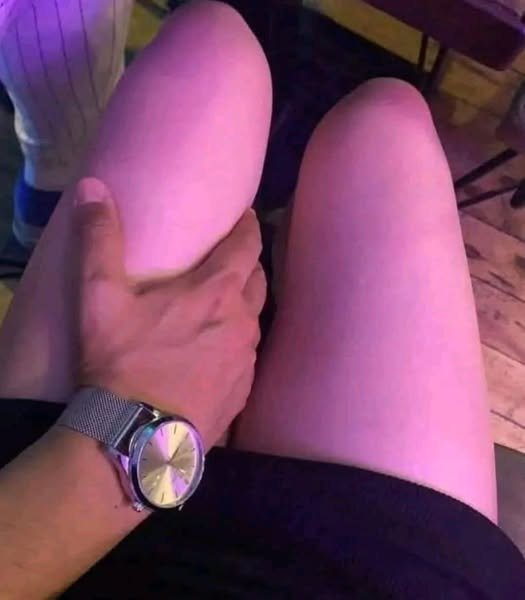Body language is a powerful tool in human communication. Sometimes, what someone does can say far more than words ever could. One common gesture that carries layered meaning is when someone places a hand on your leg. While context matters, understanding nonverbal communication can help you interpret intentions, feelings, and levels of comfort.
1. Indication of Attraction
In many cases, placing a hand on someone’s leg is a subtle signal of romantic or sexual interest. Experts in nonverbal communication explain that people often use touch to create closeness and convey attraction without words. If the touch is gentle, lingering, or paired with eye contact and smiles, it may indicate interest beyond friendship.
2. Demonstrating Comfort and Trust
Touch is also a way to show comfort and establish trust. Someone may place a hand on your leg to signal that they feel safe with you, or that they are seeking a sense of connection. Context matters — a touch during a serious conversation or a moment of reassurance may convey empathy and support rather than romantic intent.
3. Boundary Testing
A hand on the leg can also serve as a subtle way to test boundaries. People often gauge reactions to light touches to see how comfortable the other person is with physical proximity. Paying attention to your own response — whether you feel relaxed, uncomfortable, or indifferent — can guide your next steps in communication.
4. Cultural and Social Context
Different cultures and social settings affect the meaning of touch. In some cultures, casual physical contact is normal among friends, while in others it carries more intimate connotations. Understanding cultural norms is essential when interpreting gestures like a hand on the leg.
5. Signals of Protection or Reassurance
Sometimes, the gesture is protective or reassuring rather than flirtatious. A partner, friend, or relative may place a hand on your leg during moments of stress, fear, or emotional vulnerability. This type of touch conveys a desire to comfort and support.
6. Pay Attention to Additional Nonverbal Cues
To correctly interpret the gesture, consider accompanying signals:
-
Eye Contact: Sustained or frequent glances may indicate interest.
-
Facial Expression: Smiles, raised eyebrows, or softness in the eyes can hint at warmth.
-
Body Orientation: Turning toward someone while touching suggests openness, while pulling back indicates discomfort or casualness.
7. Consent and Comfort are Key
While analyzing nonverbal cues is insightful, it’s crucial to prioritize consent and comfort. If you feel uneasy, it’s acceptable to gently remove the hand or communicate your boundaries. Nonverbal signals should complement verbal communication, not replace it.
8. Situational Interpretation
Consider the context:
-
Social Setting: A playful gathering vs. a professional meeting changes meaning.
-
Relationship Type: Close friends, romantic partners, or casual acquaintances all bring different interpretations.
-
Frequency and Timing: A single touch may mean little, but repeated gestures combined with other cues can be significant.
9. The Science Behind Touch
Research shows that human touch releases oxytocin, the “bonding hormone,” which fosters trust and closeness. A hand on the leg can subconsciously increase feelings of connection, reduce stress, and create a sense of intimacy — even without explicit verbal expression.
10. Decoding Mixed Signals
Sometimes, a gesture can be ambiguous. A hand on the leg could mean attraction, reassurance, or simply a friendly habit. Observing patterns over time, alongside verbal communication, is the most reliable way to interpret meaning.
Conclusion
A hand on the leg is more than a simple gesture — it’s a window into human emotions, intentions, and connections. By paying attention to body language, context, and accompanying nonverbal cues, you can better understand what someone may be communicating without words. Remember: boundaries, consent, and situational awareness are key when interpreting touch.
Understanding nonverbal signals like this not only improves your social and romantic interactions but also deepens your empathy and emotional intelligence. Next time someone places a hand on your leg, notice their intention, your own feelings, and the broader context — it may reveal more than you think.

